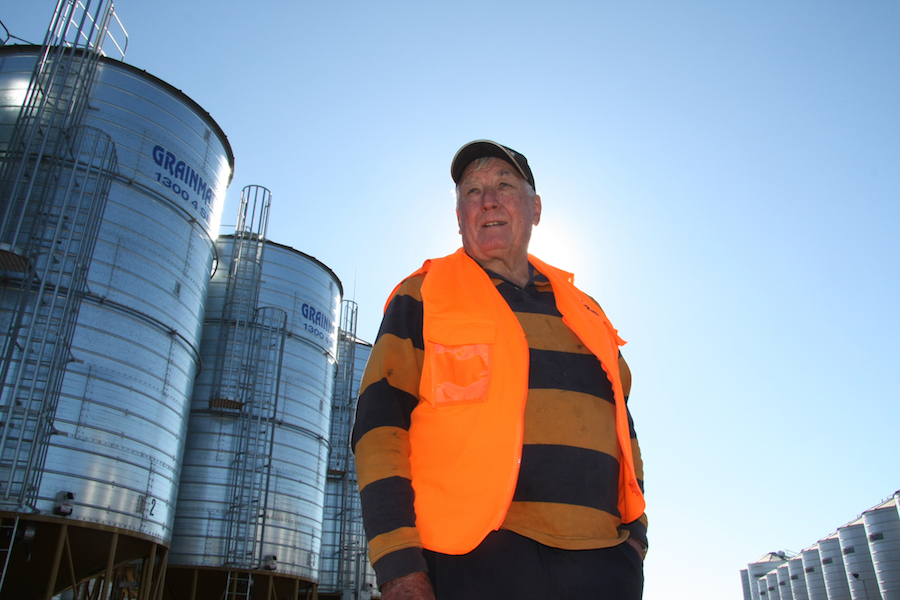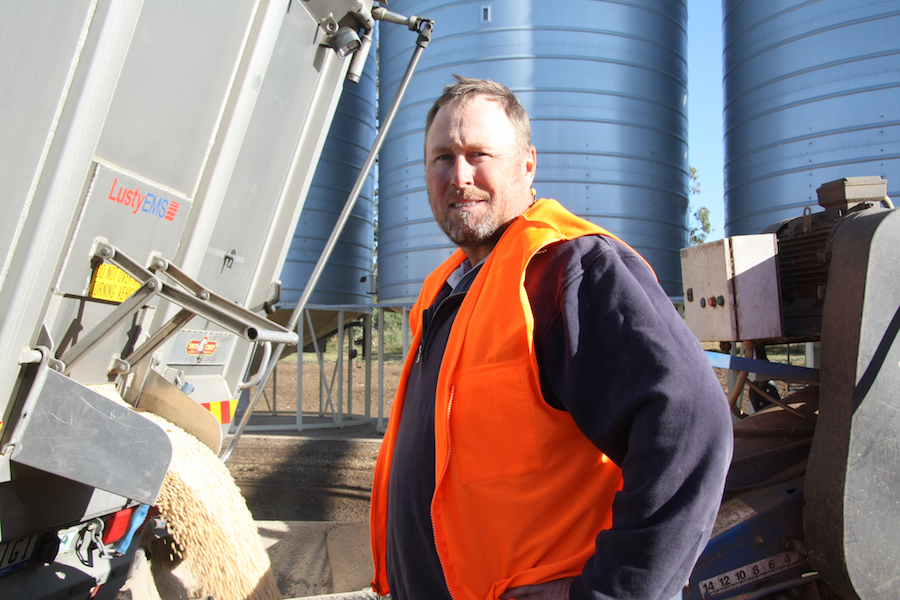Southern Queensland growers and grain storage contractors Wayne and Peter Anderson have recorded no major workplace health and safety (WHS) accidents in more than 20 years of operating a grain storage facility near Toowoomba.
The Andersons have built a large-scale contract storage business specialising in grain segregation. Grain is segregated by grade, protein, moisture content, cultivar and customer, mainly for high-value human consumption markets.
The Arcadia Rural facility located on the family’s 526-hectare mixed farm at Kingsthorpe on the Darling Downs includes 13,000 tonnes of storage capacity.
In a commercial storage facility of this scale, risk avoidance spanning decades is no small feat. The Andersons have achieved it with a safety-first rationale underpinned by unwavering commitment to three main areas that consistently minimise WHS risk – storage safety protocols, infrastructure and equipment.
Peter says that, in particular, advances in the safety design features of modern storage infrastructure such as silos have made a large contribution to Arcadia Rural’s injury-free performance history.
The Andersons have accumulated these beneficial safety features through long-term investment in the storage business. From humble beginnings as an on-farm silo complex with 16 silos in the 1990s, for example, they have since invested in about 100 silos, with storage capacity ranging from 70 to 250t.
When purchasing new silos, the Andersons request that sometimes-optional safety features are included in the manufacturer design.

Wayne Anderson started the grain storage business with an on-farm silo complex in the 1990s. Since then, Wayne and his son Peter have invested in about 100 silos at the Arcadia Rural facility near Toowoomba.
For instance, Peter and his father Wayne opt for ladders on silos, with cages and intermediate platforms, that comply with the Australian standard for safe maintenance and monitoring of stored grain.
GRDC grain storage specialist Ben White says that, in contrast with the Andersons, some growers are tempted to save on storage infrastructure costs by omitting ladders when ordering new silos.
But Mr White says installing silos without ladders reduces the functionality of the structures, which, in turn, increases the risk and difficulty of silo maintenance and grain monitoring for growers.
He says that, in some instances, manufacturers have encouraged growers not to include ladders with their silo orders, citing reduced WHS risk through avoiding ladder use, and transport and construction benefits.
But Mr White emphasises the safety and functional benefits of ladders on silos. “Ladders are an essential silo feature that allow growers to safely inspect grain in the headspace zone between the top of the grain stack and the silo roof.”
He urges growers to use ladders to regularly inspect the silo headspace because that is where storage problems are most likely to appear first and where insects are most prevalent. “Ladder access to the silo lid and inlet is also essential for maintenance of seals and lid mechanisms,” Mr White says.
The Andersons ensure that the safety features included in the manufacturer design of new infrastructure and equipment are retained and properly maintained for all operations.
 The Andersons opt for silo ladders with cages and intermediate platforms to minimise workplace health and safety risk. Photo: Liz Wells
The Andersons opt for silo ladders with cages and intermediate platforms to minimise workplace health and safety risk. Photo: Liz Wells
Safety modification
The father-and-son partnership has also taken its commitment to storage safety a step further, with a modification to the manufacturer’s conventional silo design.
The Andersons invest in silos, which are custom-made for the business, that have the manhole positioned low on the base of the structure. The manhole is usually located high, instead of low, on the silo base.
Peter says the repositioned manhole aims to reduce the potential for accidents when working inside silos. “Shifting the manhole closer to the silo base means we can work while standing outside the structure and only need to place our upper bodies inside the silo,” he says.
Before this modification was implemented, the Arcadia Rural team – Peter, Wayne and Phil Snyman – needed to use a ladder to climb inside silos.
“Entering silos is the number one work health and safety risk for the business,” he says, adding that the main reason for entering silos is cleaning and maintenance.
Hygiene is a critical requirement for the segregation-focused facility, particularly to maintain quality where stored grain, such as pulses, are assessed for visual and other quality characteristics in high-value export markets.
The interiors of silos are meticulously cleaned using a broom, high-pressure hose, air compressor or battery-powered leaf blower, depending on the level of hygiene required for the following stored grain commodity. Hygiene is also carefully maintained on areas surrounding silos to counter the high risk of spilt grain causing accidents, such as slips and falls.
“Some grains pose a slipping hazard when they are split on concrete surfaces. Soybeans, for example, can be as slippery as ball bearings,” Peter says.
To further minimise WHS risk, two employees are engaged in all operations at Arcadia Rural, especially those inside silos, where accidents can be hidden from view, delaying incident detection and response.
Staff also assist truck drivers with all operations for loading and unloading grain to mitigate the high risk of injury during these operations.
A national report released by the Rural Safety and Health Alliance last year found, on average, three deaths and 140 injuries occur on grain farms each year. Of these injuries, one-quarter occur when loading and unloading grain.

Peter and other staff at Arcadia Rural assist truck drivers with all operations for loading and unloading grain. Photo: Liz Wells
Peter says maintaining a uniform and well-drained soil surface across the facility’s delivery and dispatch area is another vital measure that helps mitigate the risk of trucks tipping or rolling when loading and unloading grain.
Chasing this objective, the Andersons regularly inspect and grade the surface of the storage site where more than 1000 trucks load and unload about 32,000t of grain a year. “Having a facility that provides adequate space for trucks to safely turn and manoeuvre is very important to us,” Peter says.
To this end, site planning and preparation for the facility, covering about 30,000 square metres, was an important consideration when establishing the storage business.
For instance, the Andersons paid the local electricity distribution company $20,000 to relocate a power pole and overhead power lines on their property that posed an onsite safety risk, especially when operating trucks and augurs.
The Arcadia Rural storage facility is supplementary to the Andersons’ grains operation where they grow a diverse mix of crops on about 500ha, including 200ha of irrigated country.
The family’s summer and winter cropping programs include wheat, barley, chickpeas, carrots, sorghum, maize, mungbeans, sunflowers and soybeans. They also produce cereal and lucerne hay and run 50 head of Angus and Angus-cross cattle.
More information: Peter Anderson, 0439 300 298, pandersonarc@bigpond.com

























































